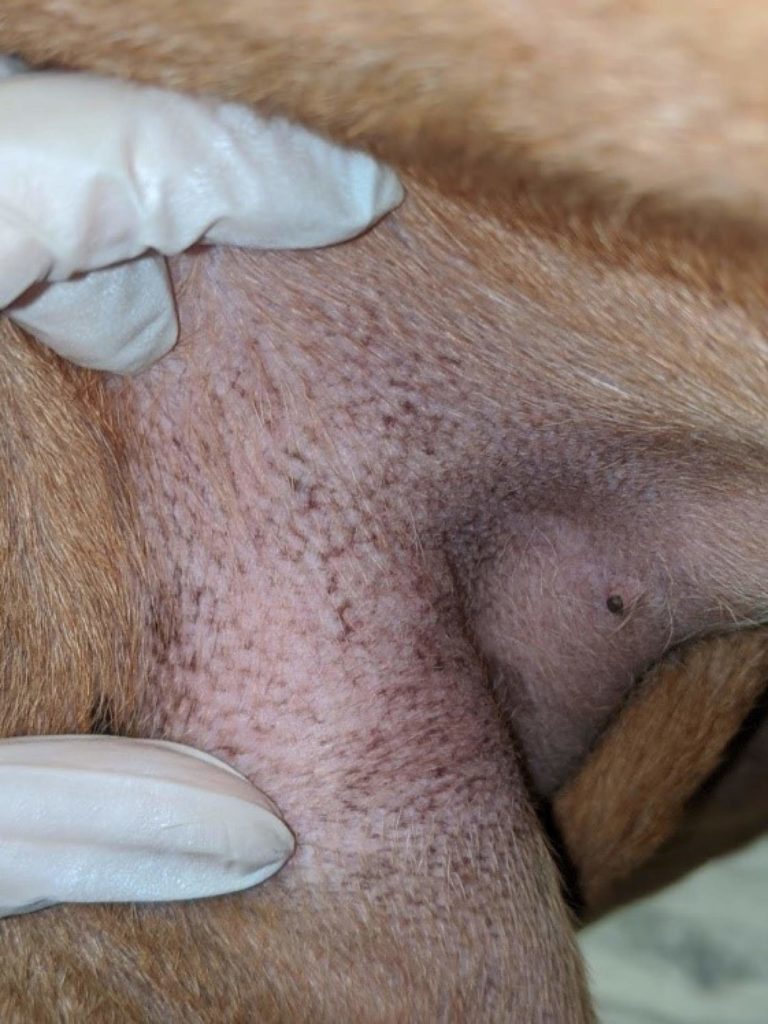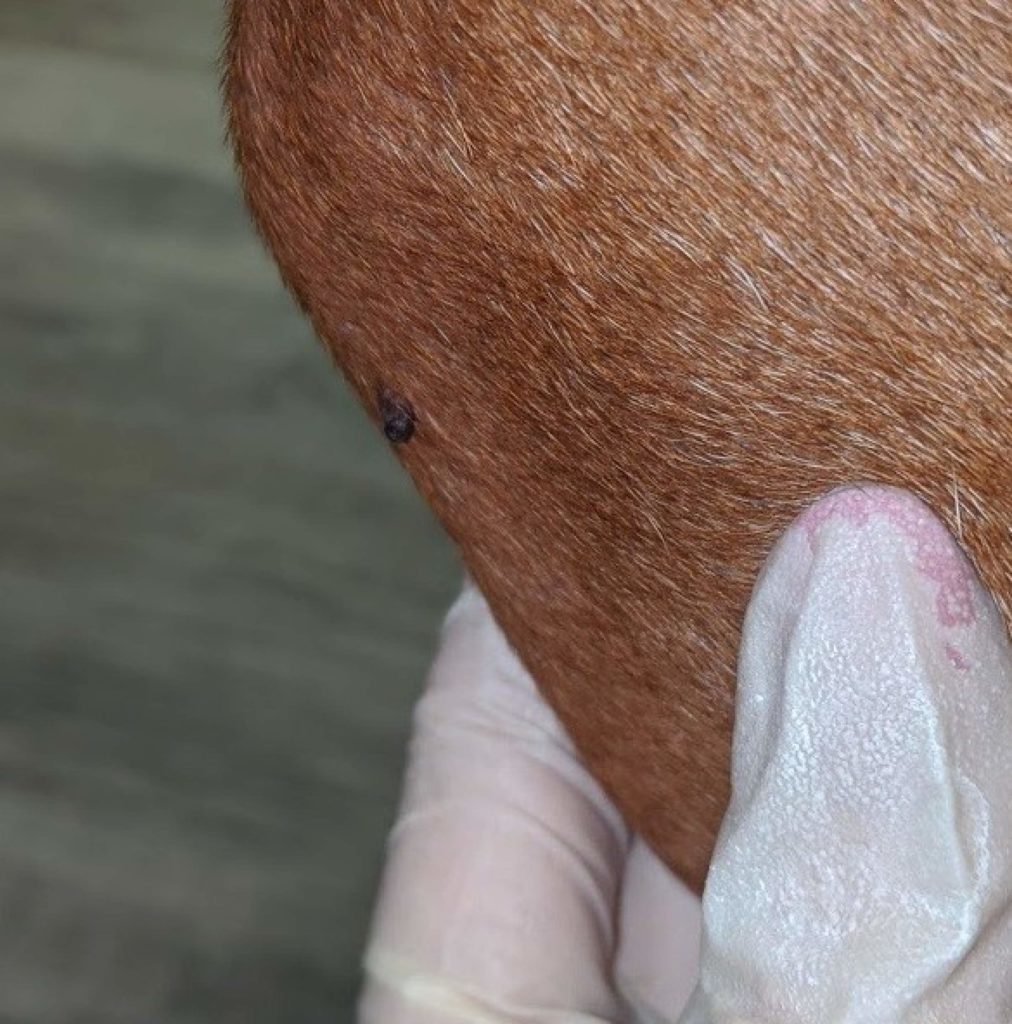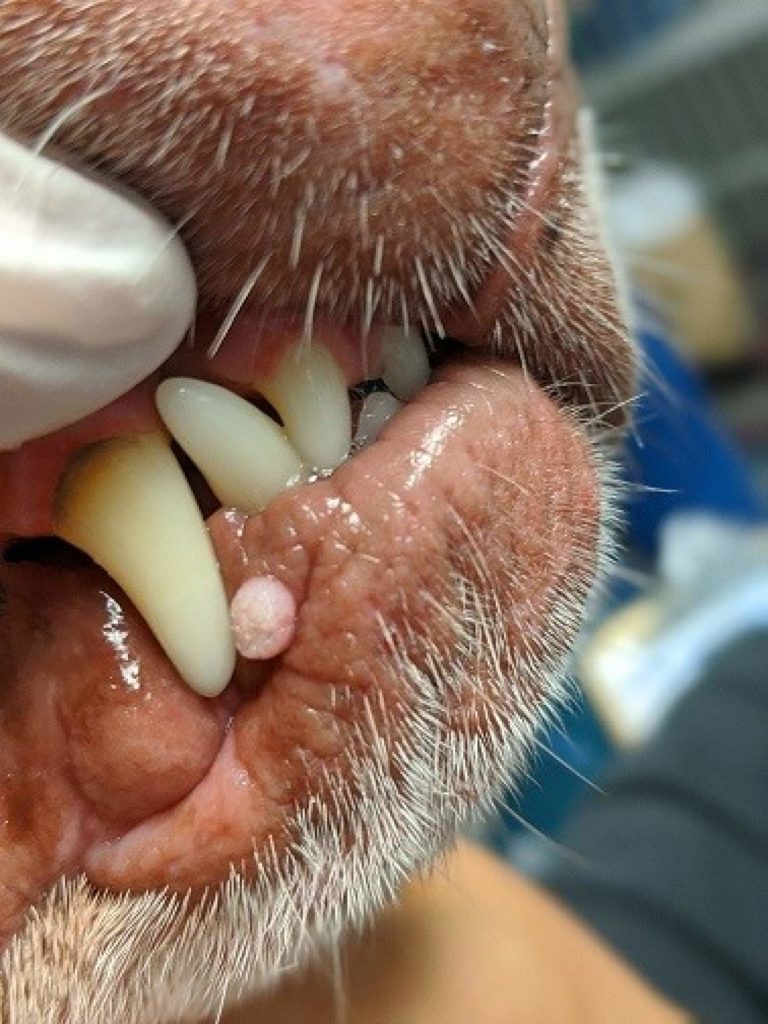Monthly Doctors Blog: Common Skin Ailments

Every month, the doctors of AtlasVet are writing a blog post to help pet owners with common questions.
For September we have Common Skin Ailments by Dr. Christina Klare!
Pets are commonly brought in for exam here at AtlasVet to have a skin growth checked out. Many growths require a doctor to diagnose and discuss treatment options, but some are easy to identify at home. This article will outline a few common skin growths that are generally okay to monitor at home and what types of skin issues require a doctor’s examination. (Please see accompanying photos below).
Viral papillomas are very common, especially in young dogs. They have frond-like appendages (often compared to a sea anemone or head of cauliflower) and are usually found on the lips or gums. It is caused by the canine papilloma virus-1 and is spread through direct contact with a papilloma on an infected dog or with the virus in the environment (on toys, bedding, food bowls, etc.). It cannot be spread to humans or other animals. The virus is so ubiquitous in the canine population that quarantining a dog with an oral papilloma is not usually necessary. Most papillomas regress on their own in 1-2 months and do not require treatment. If present for longer than 3 months or if causing issues to your pet, treatment options can be discussed during a doctor’s exam.
Skin tags are benign skin growths. Their appearance can vary but usually are soft, hairless, fleshy, pink or pigmented, and connected to the skin by a stalk (called a peduncle). Some skin tags are very small and barely visible, and some hang off the skin by more than a couple centimeters. These rarely cause problems for the pet but can sometimes be traumatized (if a dog regularly scratches them or gets them caught on things) or be aesthetically unpleasant and a pet owner will occasionally opt to have them surgically removed.
Hyperpigmentation is a benign change of the skin pigmentation and texture. It is most common in dogs who experience skin allergies but can be seen after any type of inflammation, infection, or friction to the area. It usually looks like a dark brown or black mottling of the skin and is common on the abdomen and in the groin area.
Sebaceous adenoma can be visually similar to a skin tag and is a benign growth of oil producing glands in the skin. They are small, raised, usually white to pink in color, have irregular borders, and sometimes secrete a greasy fluid. These usually do not cause any problems, but occasionally the growths can become inflamed or infected.
Any other type of lump, growth, or lesion that is new to your pet and/or is red, inflamed, irritated, painful, or itchy should be examined by a doctor as soon as possible. Depending on the growth or lesion, we may recommend cytology (looking for bacteria or cells under the microscope), biopsy, or certain medications. If you have any questions or concerns, please give us a call anytime!





